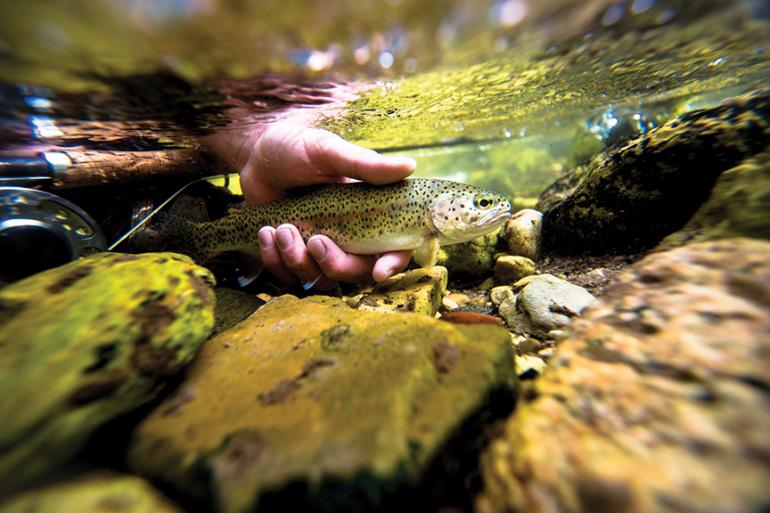Playing with Your Food
What catch-and-release really is
On its surface, catch-and-release fishing is kind of weird. I’ve heard it called “playing with your food,” and honestly, it’s hard to argue. As a hunter who enjoys the taste of wild game and lives for the hunt (and to be perfectly honest, the kill), letting something go that you have worked hard for and spent a lot of money on seems pretty ridiculous. We don’t catch and release elk and there’s far fewer of them than there are rainbow trout. But it’s not strictly a matter of conservation.
I have a good friend who lives in Idaho, and every year we pick a small stream in one of our respective states where we meet, drink too much beer, and fish. One year, we caught more than one hundred fish the first day. All of them we released as quickly as we could. None of them were over fourteen inches, but on a light rod, they were fun. We laughed our butts off and it was one of the most memorable days I have ever had afield.
If we had been keeping our catch, our fishing would have ended in less than an hour—we were catching cutthroats and the limit on that species is three per day. The point, for me, of catch-and-release fishing is that it extends our experience. In this life of deadlines and financial pressures and exhaust fumes, time on the water in wild country is the most important part of fishing.
Since it was first enacted in 1952 (for trout, in Michigan), catch-and-release has been part of every fly fisherman’s mantra. It was originally intended to conserve fisheries—a particular piece of water could be fished many times by many fishermen and the state wouldn’t have to stock as many trout. Today, it’s still an effective conservation strategy—a way to extend the resource so that many anglers can be out on the water, catch many fish, and have a good day.
But in a state like Montana, is there really anything wrong with keeping fish to eat? Even with a pile of fishermen floating down the river every day? Probably not. Our state’s fishery biologists are smart men and women. Bag limits are set based on the best available science. And let’s be honest—catch-and-release fishing kills a lot of fish that we don’t know about.
“We assume when we let a fish go and it swims away visibly unharmed, it will be okay, that it will live,” writes Erin Block in a recent issue of Trout magazine, the publication of Trout Unlimited. “No news is good news, they say. But struggling to complete exhaustion often results in a dead fish whether they swim away or not, and research has shown catch-and-release fishing, more specifically air exposure and handling time, impact longevity.”
Block’s article points out that pulling the fish out of the water, spending a couple of minutes snapping photos—which we’ve all done—and then putting the fish back is akin to running a marathon, then holding your head underwater for a several minutes. Fish need water like we need air.
There are tried-and-true methods to release fish so they have the best chance of survival: wet your hand first, play it quickly, don’t take the fish out of the water, fish when the water temperatures are lowest, use barbless hooks. But the fact is: catch-and-release fishing kills fish.
So what does this all mean? Personally, I will continue to catch and release. I’ll also take home a few fish now and again. I often keep fish that have no chance of survival because I’ve hooked it badly or played it too long.
Even if you let every fish go, you’re still catching and killing—and that’s OK. It’s important to remember the facts and not get too snooty when you see someone with a limit of trout on a stringer “drowning worms” with their kids. We are all fishermen, after all, and the rivers need fishermen who care about fishing and about cold, clean water for the fish. That’s all of us.
Tom Reed lives outside Pony and is the author of Blue Lines, A Fishing Life, available online or at bookstores around Bozeman. For more information, visit tomreedbooks.com.












